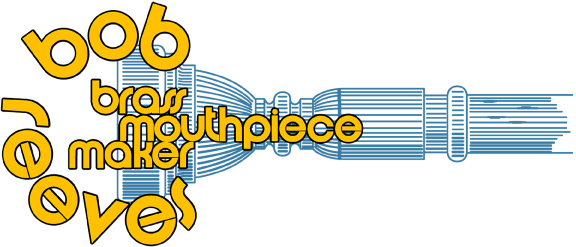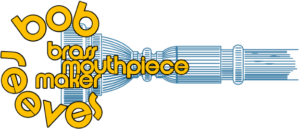I am continually grateful for the care and attention that was paid me by my teachers in the areas of foundation, mechanics, technique and musical perspective. Where equipment was concerned they made it clear that the sound must be heard first in my mind, that I must solidify my musical ideas with strong repeatable skills, and that only as those skills gained in strength would good equipment become more and more meaningful. The message they gave to me is the same one I give to my students: In order to get the most out of your practice time you need to prioritize your practice categories. After you have developed efficient and appropriate practice habits you can then look for optimal equipment.
Although the beauty of a trumpet sound, along with its power and brilliant color is what we initially fall in love with, it is our foundation on the instrument that provides the superstructure upon which we build our mechanics and technique. The foundation of our playing is developed and perfected on a daily basis. It is often called the “warm-up” and usually includes mouthpiece work, lip slurs, scales, rapid articulation studies, double- and triple-tongue drills, and lip flexibility studies. My own foundation practice is a combination of selected exercises from the Max Schlossberg book (“Daily Drills and Technical Studies for the Trumpet”) and the James Stamp exercises from the book “Warmups Plus Studies”. I believe that these two books are the most important books of foundational studies for all players, regardless of the musical genre (classical, jazz, commercial, etc.) in which one performs. My advice to a developing player is to choose a teacher that teaches a strong foundation as the basis for subsequent technical and artistic achievement.
Good mechanics are built upon the foundation that we put into place for ourselves on a daily basis. The terms “mechanics” and “technique” are often used almost interchangeably, though I believe that is a mistake. They are two very different things. Proper mechanics create ease of production. Ease of production then supports consistent facile technique. Therefore, good technique is a result of correct mechanics. As an example, if I execute a passage with fast finger technique well on an occasional basis, it means that I am capable of mastering physical speed against a metronome. It does not mean that my finger rhythm is even or that the sound is beautiful, or that I will always be able to produce that technique on demand. Good mechanics will promote a facile and reliable technique, but executing feats of fast technique does not necessarily promote good mechanics.
Musical perspective is the “total picture” that results from combining intuitive and learned musical knowledge. It is the total of what we know expressed in sound. One’s musical perspective is most effectively expressed when one’s foundation, mechanics, and technique are in good working order. Oftentimes, a player’s musical perspective is more developed than his or her mechanics or technique. This is fine because it is still possible to achieve an excellent musical result at each technical and mechanical level. A strong foundation, a high level of mechanical skill, and a strong technique coupled with well-developed musical perspective will produce a superior and clearer sound picture every time. Practice time therefore, should be devoted to each of these aspects on an on-going and consistent basis.
A few words about equipment: I believe strongly in the value of the after-market valve alignment. When the valves are aligned properly the “bugles” in each combination become unified in color and timbre and instrument will then blow evenly. The horn is then optimized and will play as it was meant to play. I prefer the Bob Reeves valve alignment and have been depending on it for over 20 years. It never ceases to amaze me how happy my students are with their trumpets after they have invested in a valve alignment. The current-day valve alignment is one of the significant advances in trumpet technology because in optimizing the instrument it promotes correct trumpet mechanics by encouraging players to blow straight through the trumpet instead of “tipping” the air in the direction that the pitches are moving.
If after a valve alignment the instrument is still unsatisfactory, instead of immediately running out and buying a new mouthpiece you should first examine the resistance created by the relationship between the mouthpiece and the mouthpiece receiver. If your mouthpiece fits in the mouthpiece receiver too far or not far enough its resistance may be wrong for you. Your mouthpiece might need to penetrate the receiver a little more, or be pulled back a little in order to discover a more favorable resistance. If this produces the sound and ease of blowing that you prefer then purchasing a new mouthpiece is unnecessary. If you still find the sound and/or the “blow” lacking you may wish to buy a new mouthpiece and repeat the fitting procedure.
My last point is about trumpet mouthpieces. We are in a golden age of choice where mouthpieces are concerned: there are many fine manufacturers producing excellent models from which to choose. Try everything you want to try. When you hear what you like buy it, have it fitted properly to your instrument, and begin to work with it. Bear in mind that when you first try a mouthpiece and find it attractive, you are just getting a glimpse into what it can be and can do for you. Your facial muscles will not immediately be accustomed to the new position appropriate to the new mouthpiece. Consequently, the mouthpiece might play nicely for you for a week or less, and then begin to give you trouble by making you tire quickly, making your tone airy, marginalizing your range and so on. If you work with it, play scales on it, articulate on it, practice your lip-slurs, all the while practicing carefully and correctly, in about four weeks the mouthpiece will begin to give back to you what you first found attractive about it and you will enjoy its benefits.
This article is aimed at high school and college students in the hope that they may gain a little perspective about what they have ahead of them in studying trumpet. Practice “smart”, get a good teacher and good information about your equipment, and you will enjoy the learning process more and make greater strides in achieving your technical and artistic goals.
 Roy Poper has for more than 30 years maintained an active performing career of a breadth rare among musicians. His engagements span every facet of trumpet performance including symphonic principal player (Los Angeles Chamber Orchestra and L.A. Opera), film studio work (over 500 major motion pictures), chamber music (founding member, The Modern Brass Quintet), and “popular” genres including jazz ensembles, Broadway shows, and even recordings with Frank Zappa and the Mothers of Invention.
Equally respected as a teacher, he was for more than 20 years a member of the faculty of the University of Southern California School of Music prior to moving to Oberlin, OH in 2002 to assume the duties of Associate Professor of Trumpet at the Oberlin Conservatory. His book, Roy Poper’s Guide to the Brasswind Methods of James Stamp (Balquhidder Music), which serves as a companion to James Stamp Warm-ups and Studies (Editions BIM) has become an acclaimed addition to the trumpet method-book literature, thoroughly explaining how to execute and effeciently utilize James Stamps’ teaching methods.
He continues to be in demand as a performer, performing frequently in the greater Cleveland Area and Los Angeles. He has commissioned numerous works, some of which appear on his forthcoming CD, L.A. Trumpet Works. Roy has been recorded on the Crystal, Orion, Nonesuch, and Dorian labels.
Roy Poper has for more than 30 years maintained an active performing career of a breadth rare among musicians. His engagements span every facet of trumpet performance including symphonic principal player (Los Angeles Chamber Orchestra and L.A. Opera), film studio work (over 500 major motion pictures), chamber music (founding member, The Modern Brass Quintet), and “popular” genres including jazz ensembles, Broadway shows, and even recordings with Frank Zappa and the Mothers of Invention.
Equally respected as a teacher, he was for more than 20 years a member of the faculty of the University of Southern California School of Music prior to moving to Oberlin, OH in 2002 to assume the duties of Associate Professor of Trumpet at the Oberlin Conservatory. His book, Roy Poper’s Guide to the Brasswind Methods of James Stamp (Balquhidder Music), which serves as a companion to James Stamp Warm-ups and Studies (Editions BIM) has become an acclaimed addition to the trumpet method-book literature, thoroughly explaining how to execute and effeciently utilize James Stamps’ teaching methods.
He continues to be in demand as a performer, performing frequently in the greater Cleveland Area and Los Angeles. He has commissioned numerous works, some of which appear on his forthcoming CD, L.A. Trumpet Works. Roy has been recorded on the Crystal, Orion, Nonesuch, and Dorian labels.
About Roy Poper
 Roy Poper has for more than 30 years maintained an active performing career of a breadth rare among musicians. His engagements span every facet of trumpet performance including symphonic principal player (Los Angeles Chamber Orchestra and L.A. Opera), film studio work (over 500 major motion pictures), chamber music (founding member, The Modern Brass Quintet), and “popular” genres including jazz ensembles, Broadway shows, and even recordings with Frank Zappa and the Mothers of Invention.
Equally respected as a teacher, he was for more than 20 years a member of the faculty of the University of Southern California School of Music prior to moving to Oberlin, OH in 2002 to assume the duties of Associate Professor of Trumpet at the Oberlin Conservatory. His book, Roy Poper’s Guide to the Brasswind Methods of James Stamp (Balquhidder Music), which serves as a companion to James Stamp Warm-ups and Studies (Editions BIM) has become an acclaimed addition to the trumpet method-book literature, thoroughly explaining how to execute and effeciently utilize James Stamps’ teaching methods.
He continues to be in demand as a performer, performing frequently in the greater Cleveland Area and Los Angeles. He has commissioned numerous works, some of which appear on his forthcoming CD, L.A. Trumpet Works. Roy has been recorded on the Crystal, Orion, Nonesuch, and Dorian labels.
Roy Poper has for more than 30 years maintained an active performing career of a breadth rare among musicians. His engagements span every facet of trumpet performance including symphonic principal player (Los Angeles Chamber Orchestra and L.A. Opera), film studio work (over 500 major motion pictures), chamber music (founding member, The Modern Brass Quintet), and “popular” genres including jazz ensembles, Broadway shows, and even recordings with Frank Zappa and the Mothers of Invention.
Equally respected as a teacher, he was for more than 20 years a member of the faculty of the University of Southern California School of Music prior to moving to Oberlin, OH in 2002 to assume the duties of Associate Professor of Trumpet at the Oberlin Conservatory. His book, Roy Poper’s Guide to the Brasswind Methods of James Stamp (Balquhidder Music), which serves as a companion to James Stamp Warm-ups and Studies (Editions BIM) has become an acclaimed addition to the trumpet method-book literature, thoroughly explaining how to execute and effeciently utilize James Stamps’ teaching methods.
He continues to be in demand as a performer, performing frequently in the greater Cleveland Area and Los Angeles. He has commissioned numerous works, some of which appear on his forthcoming CD, L.A. Trumpet Works. Roy has been recorded on the Crystal, Orion, Nonesuch, and Dorian labels.
